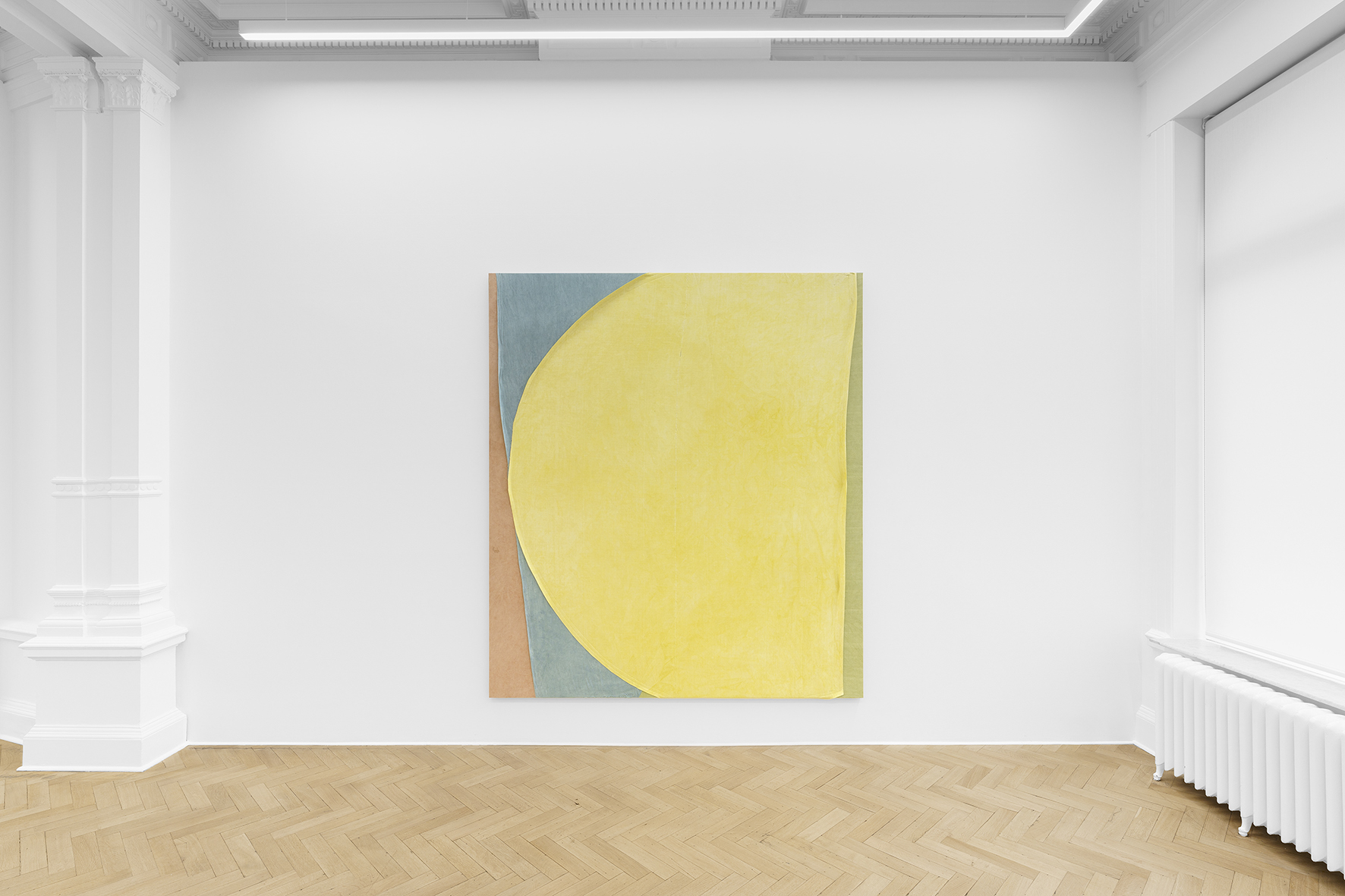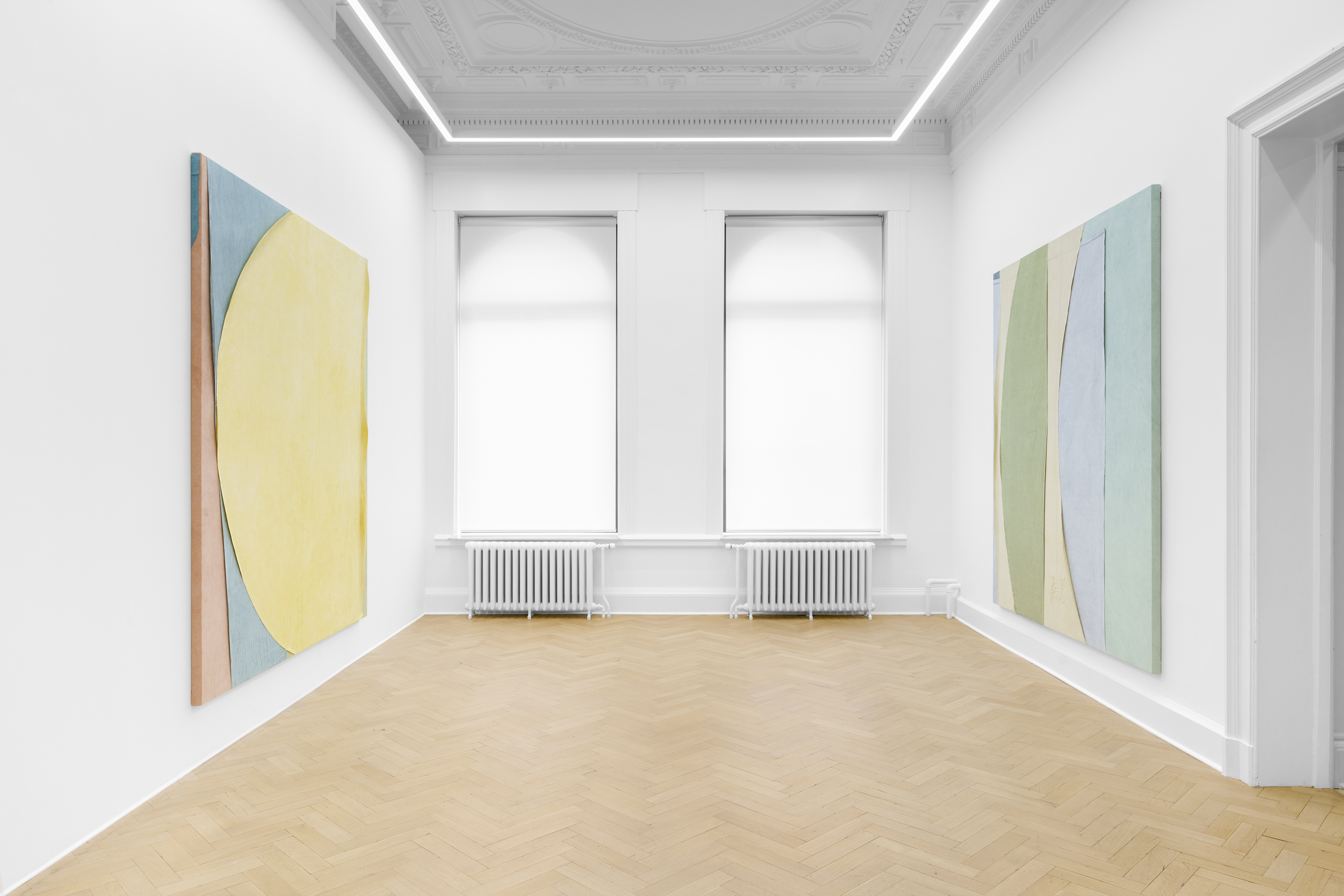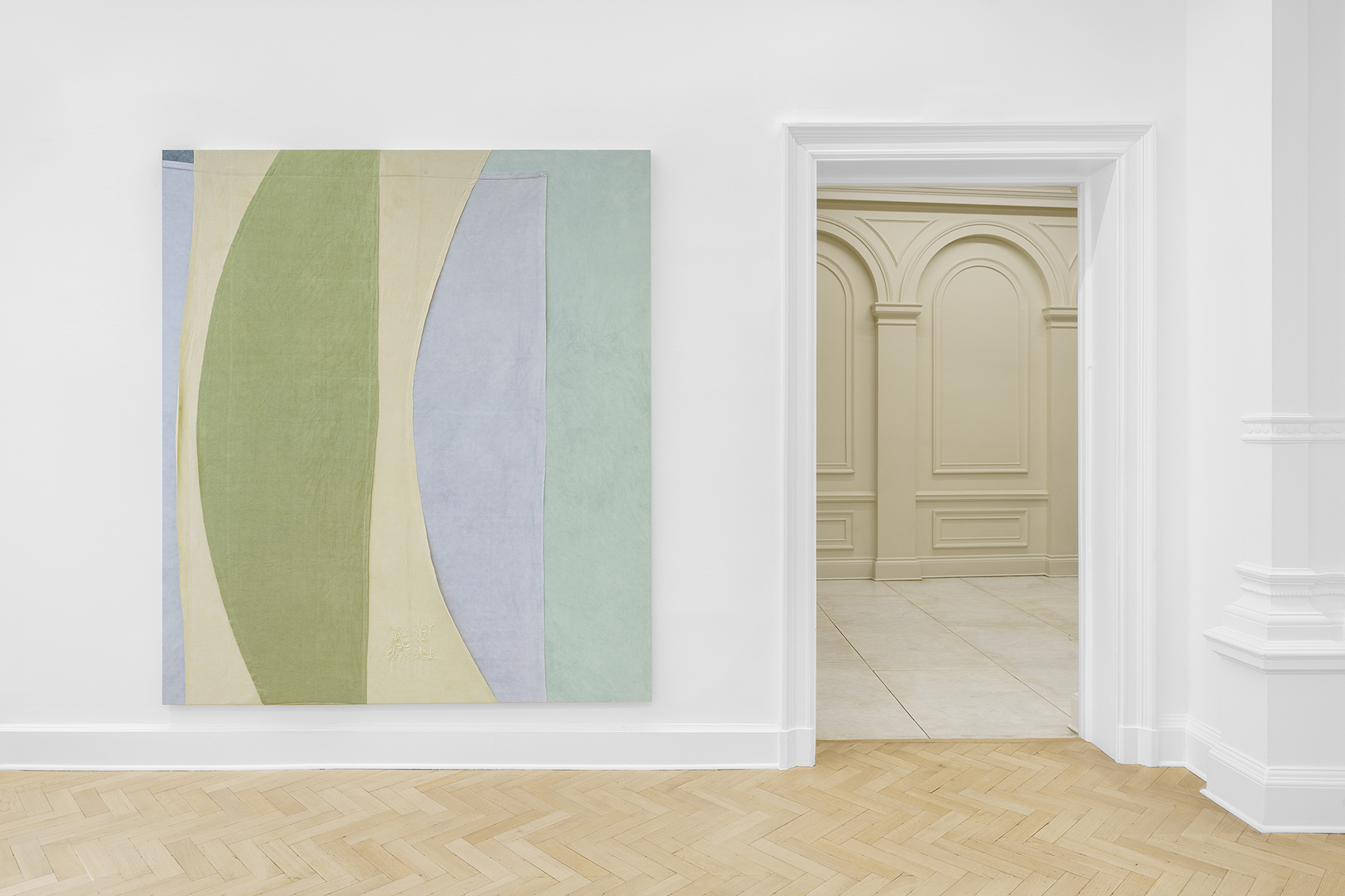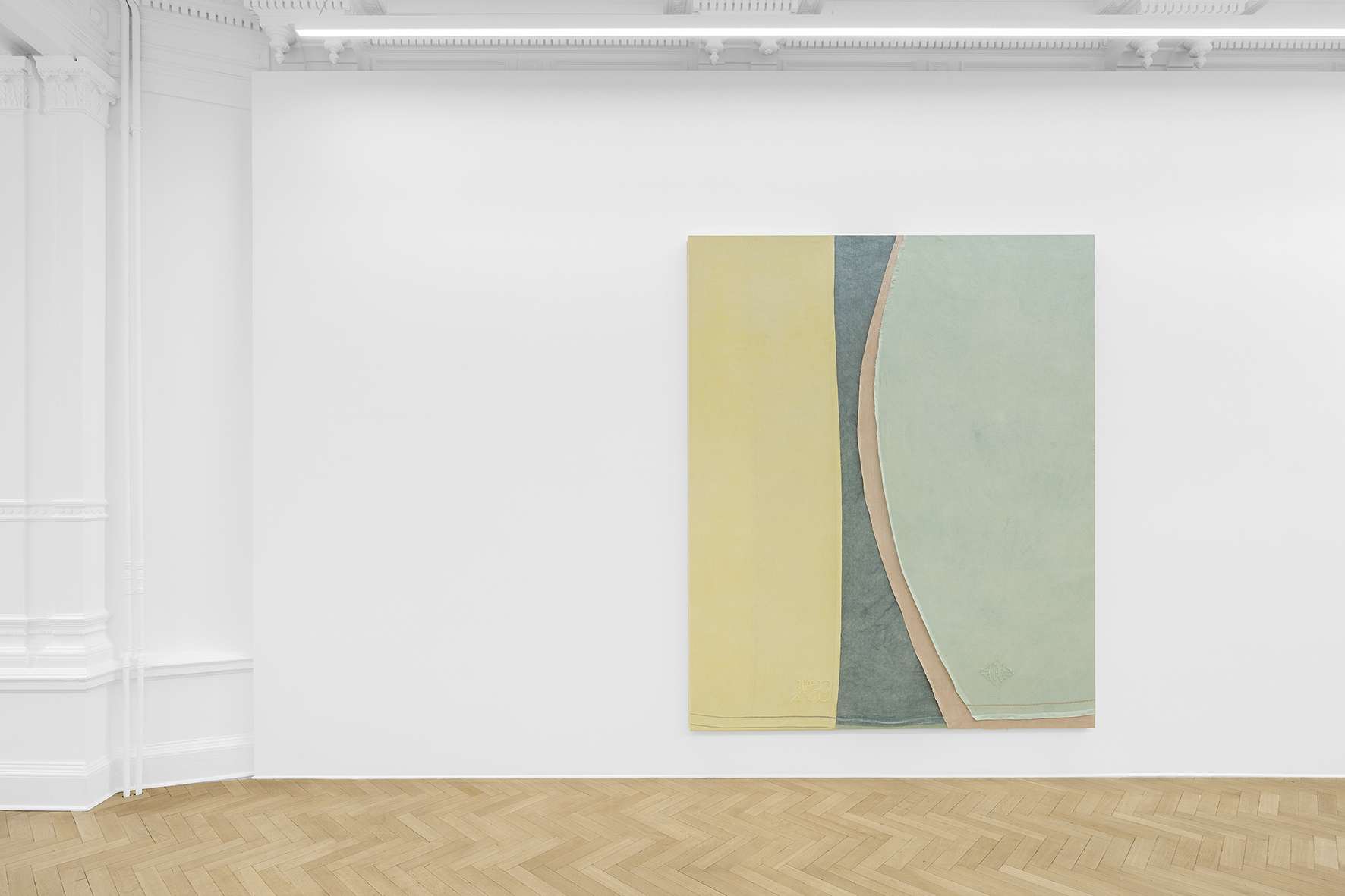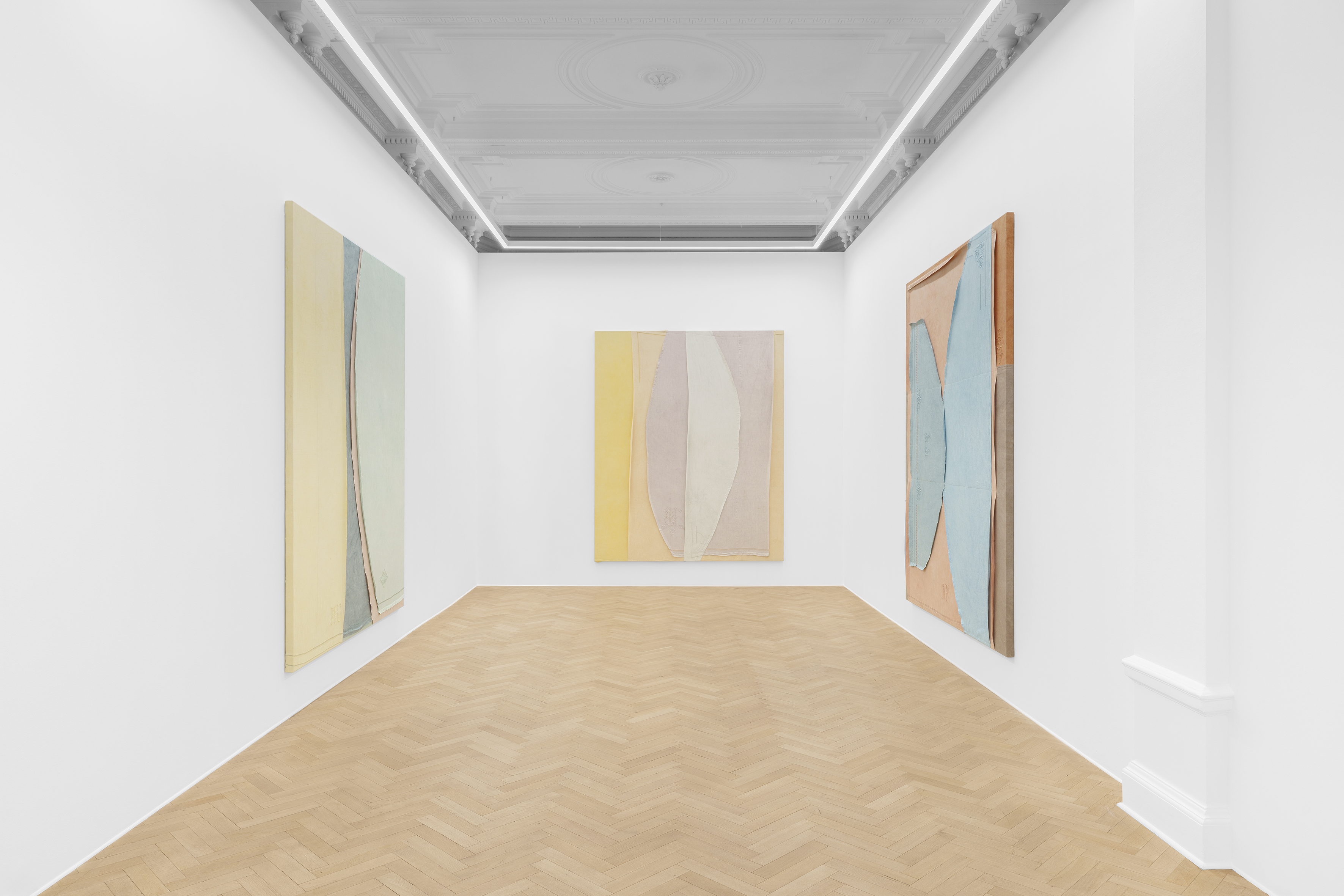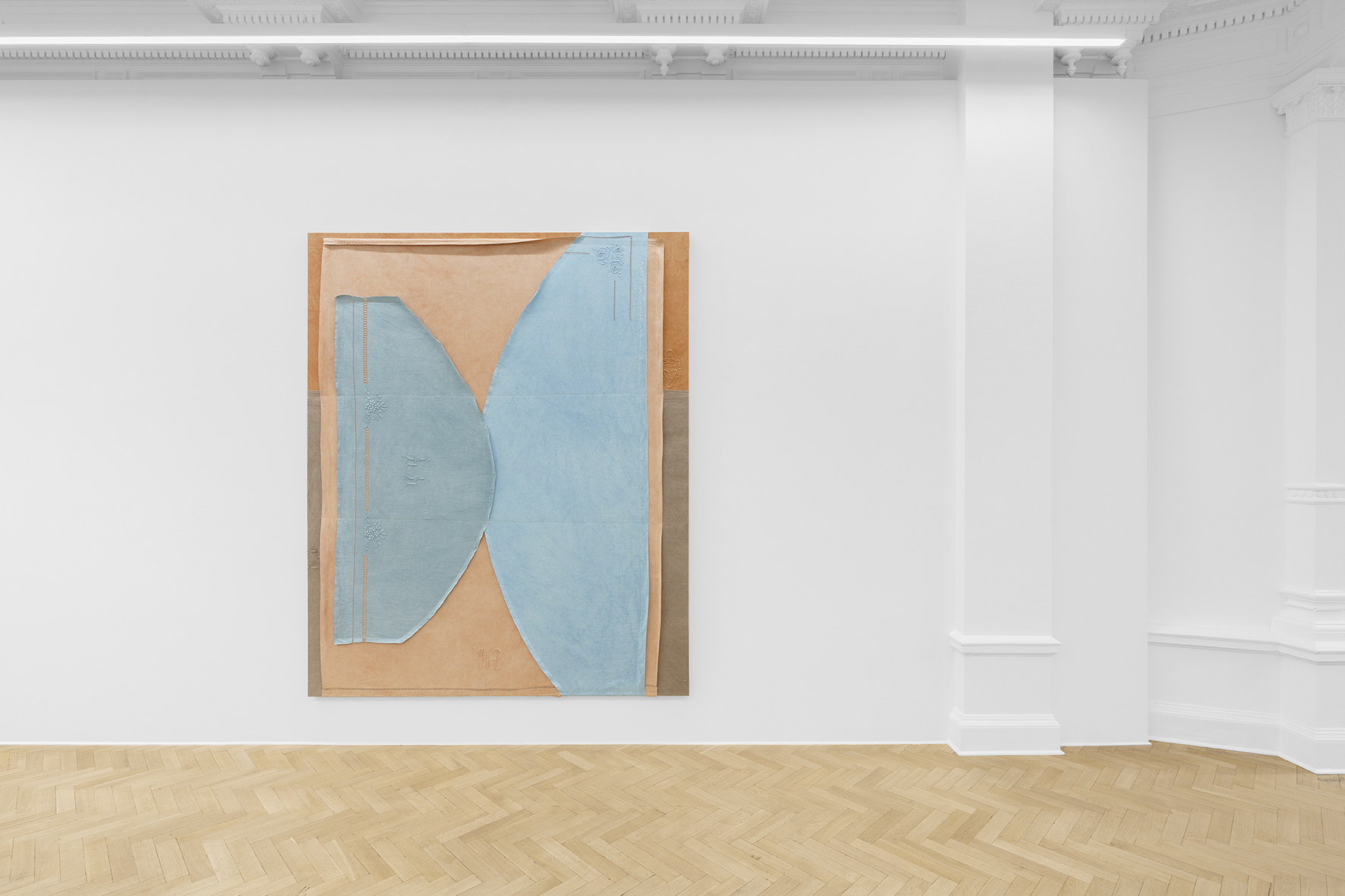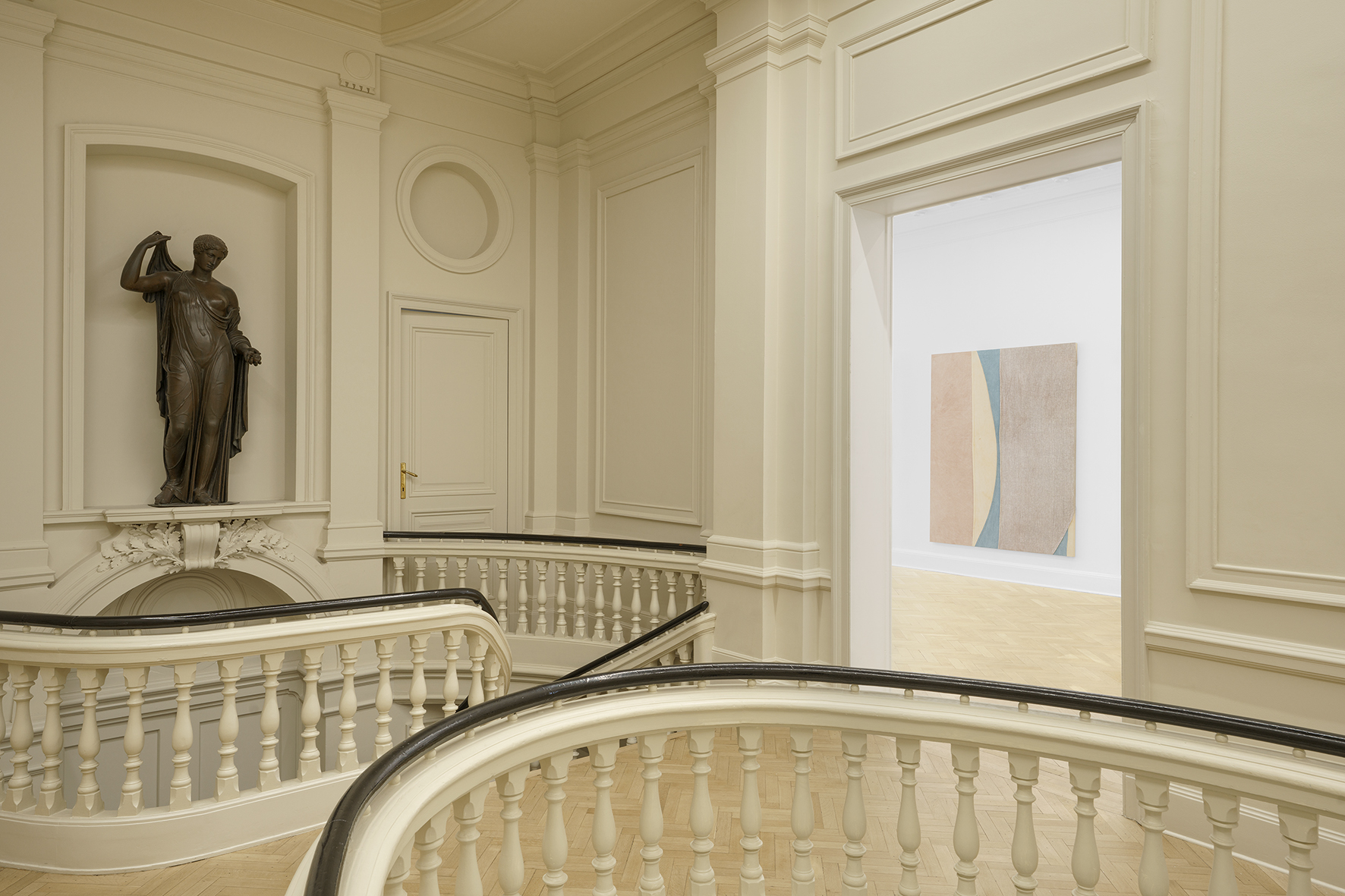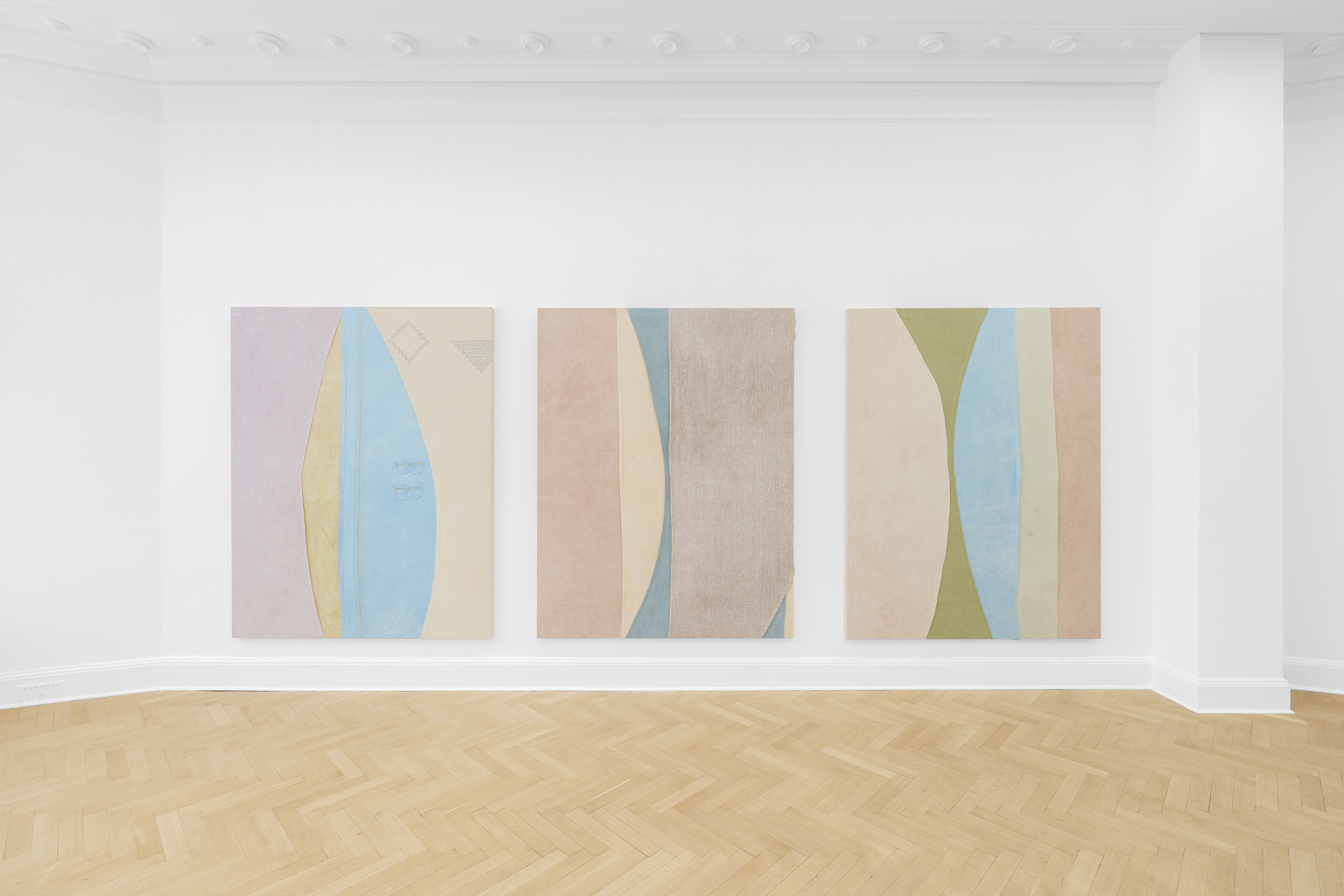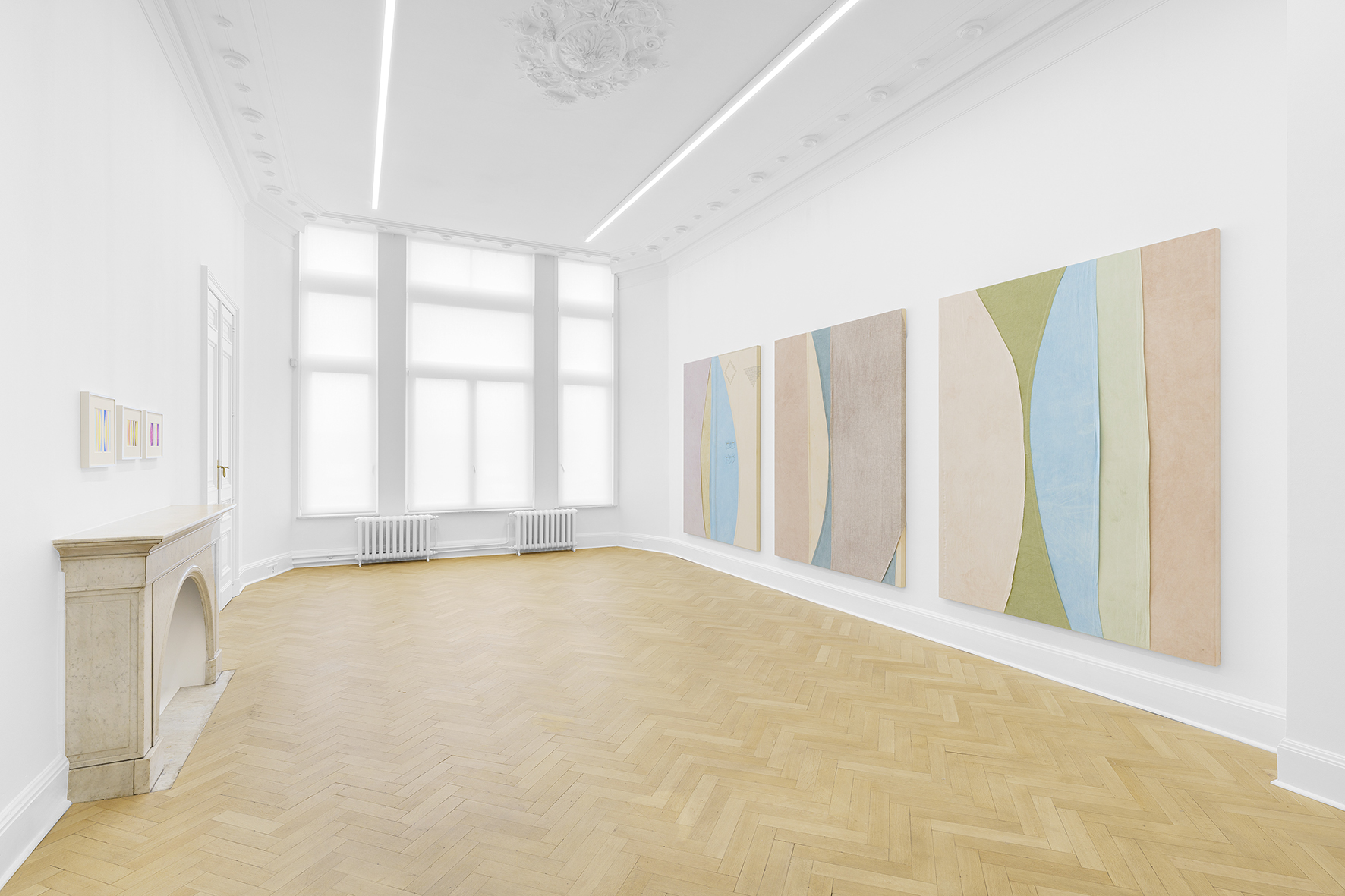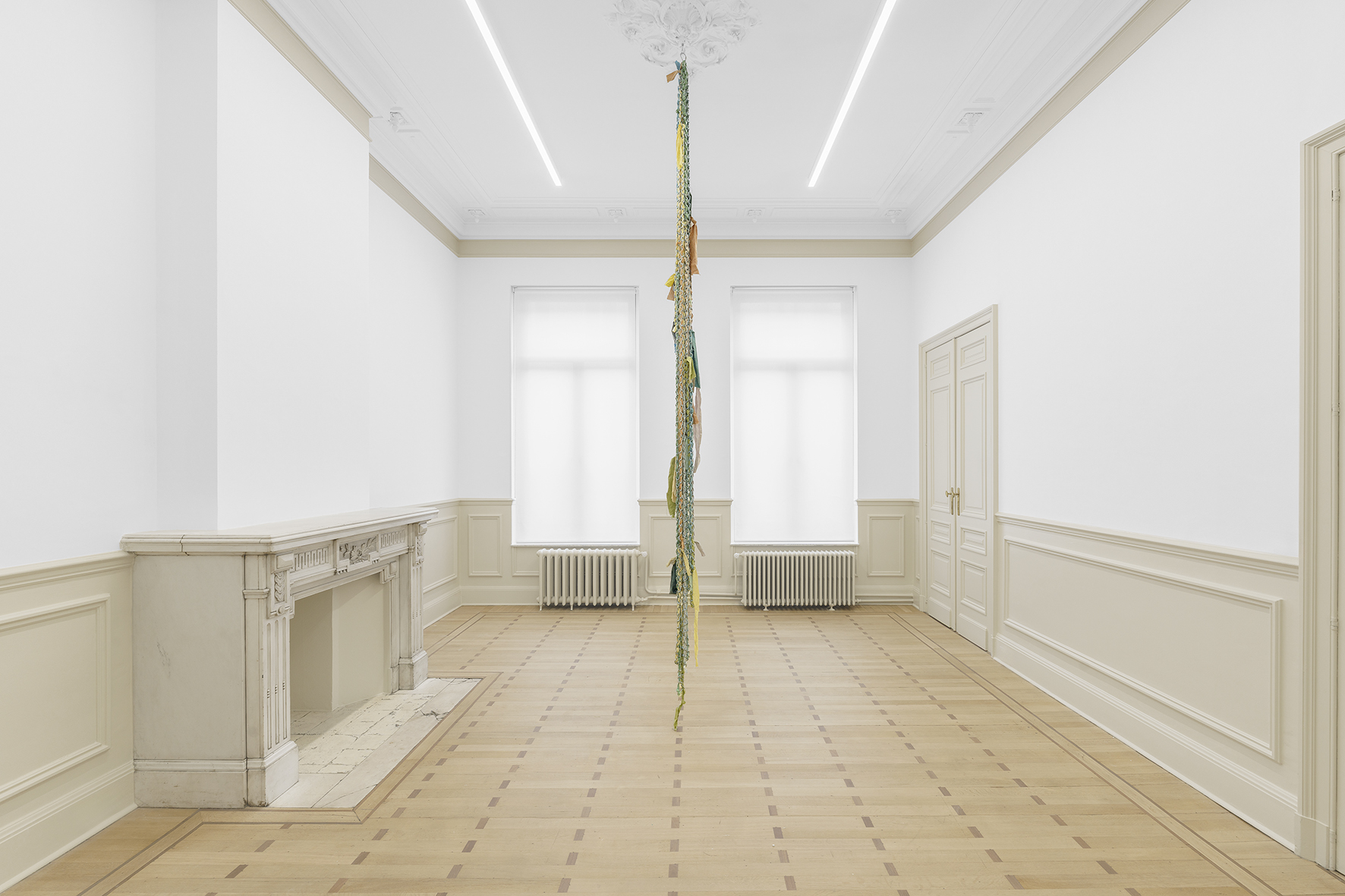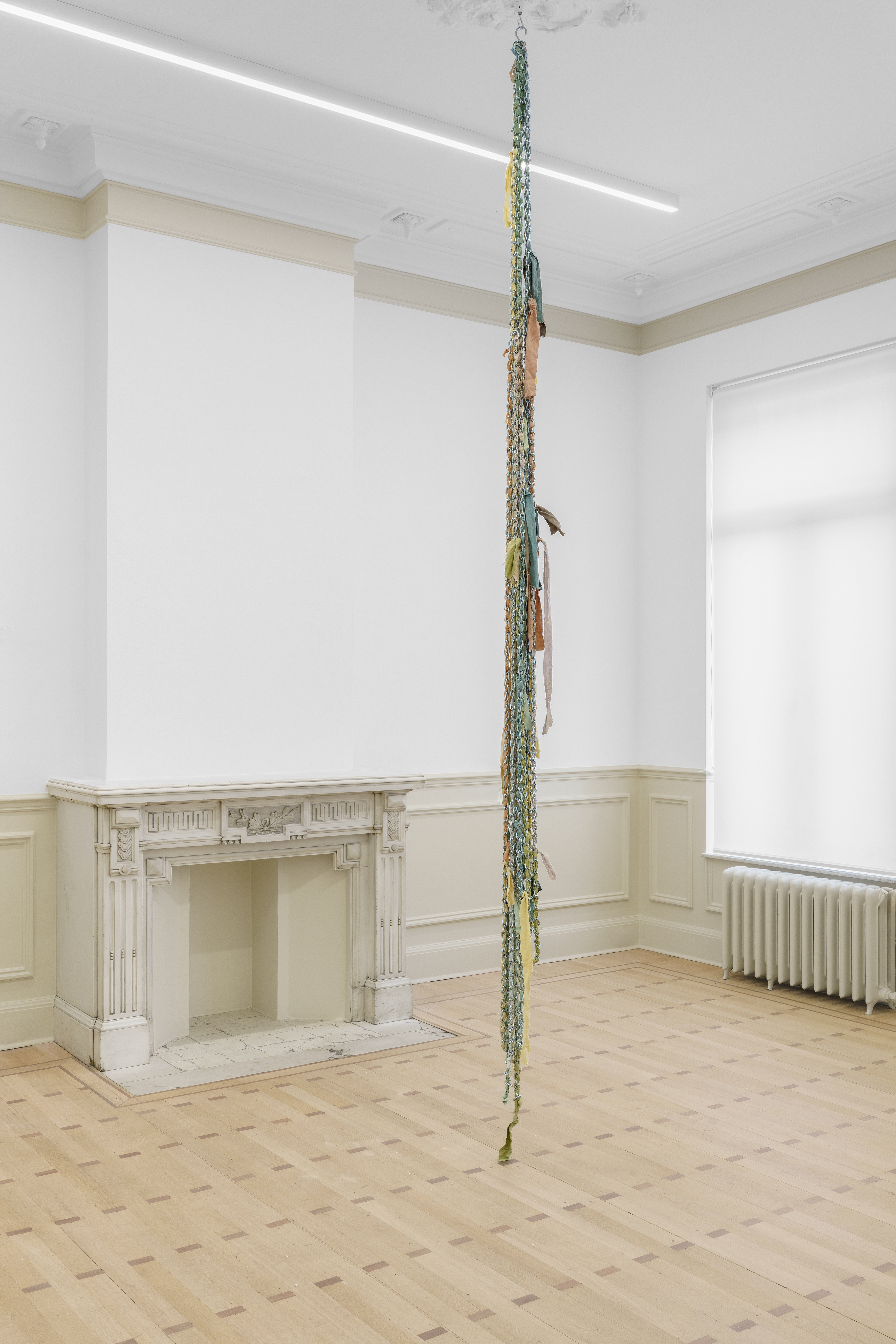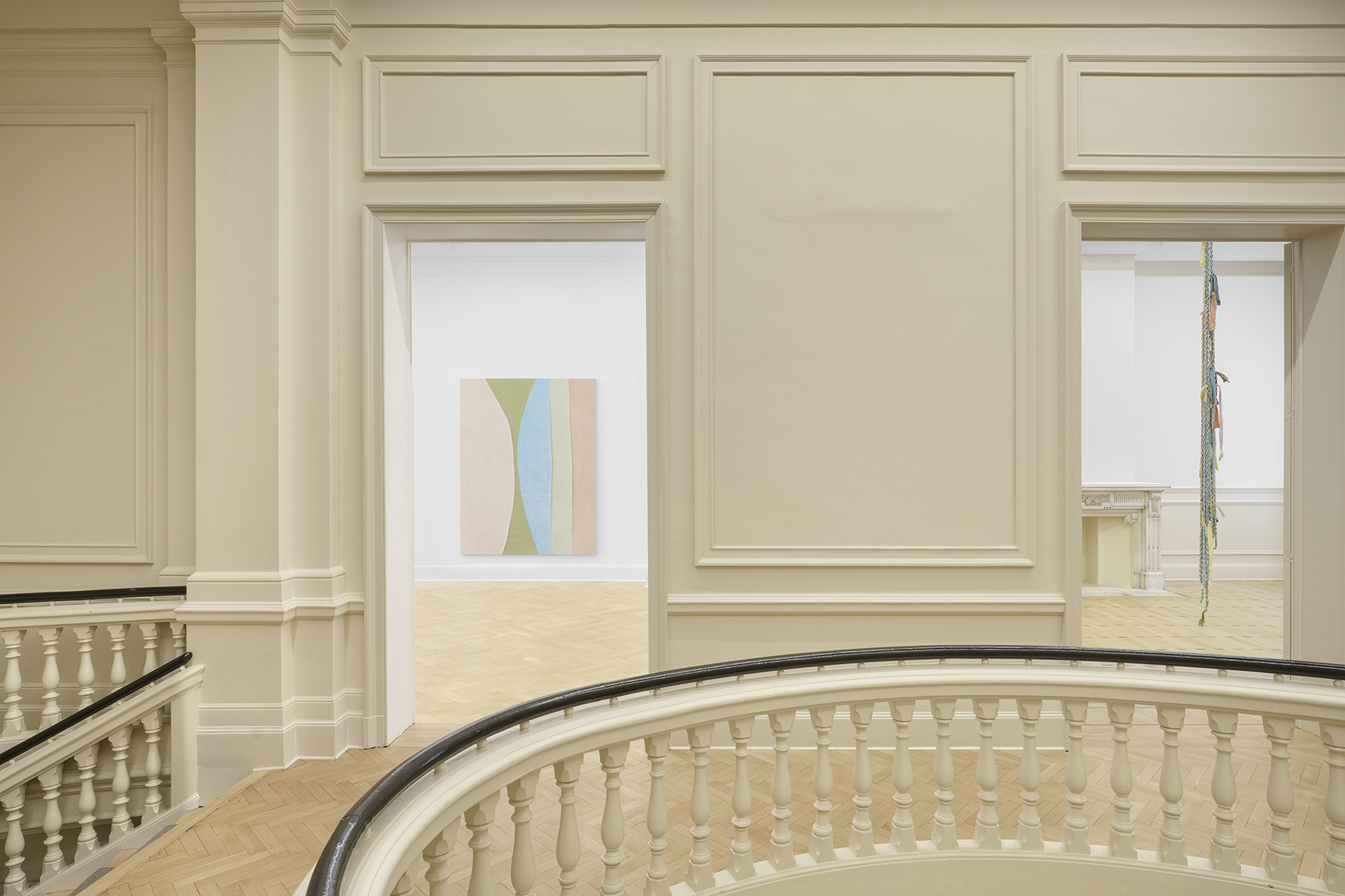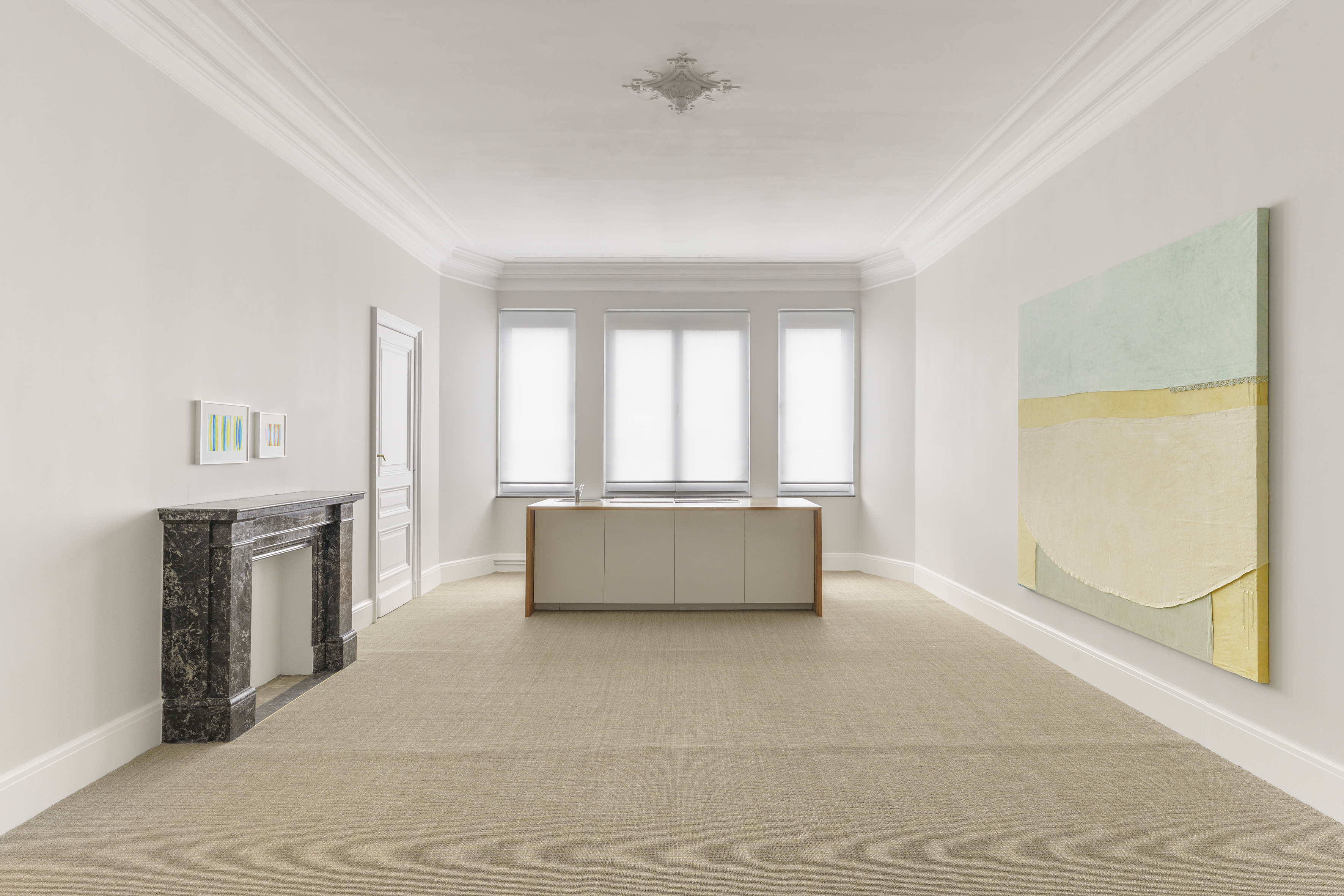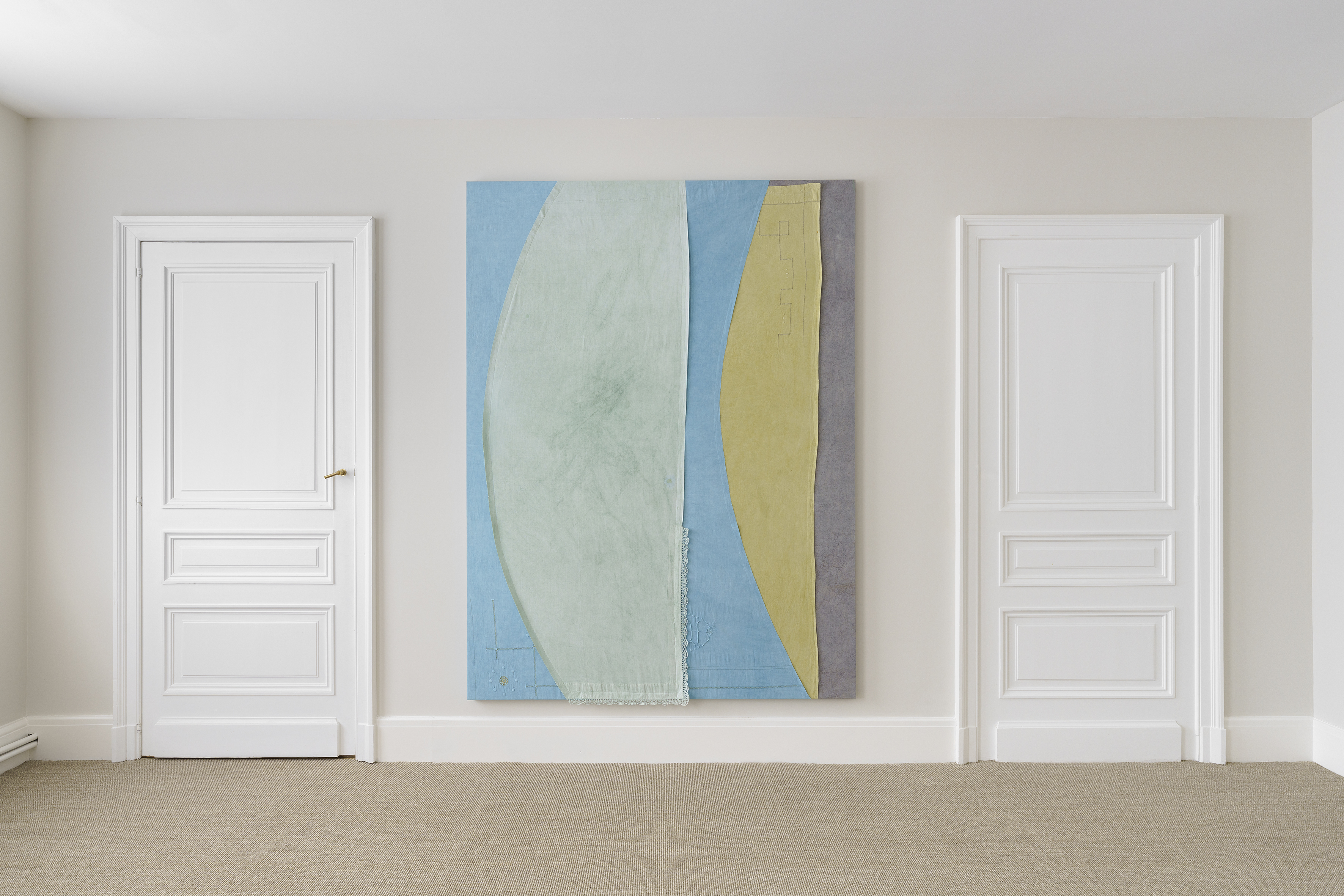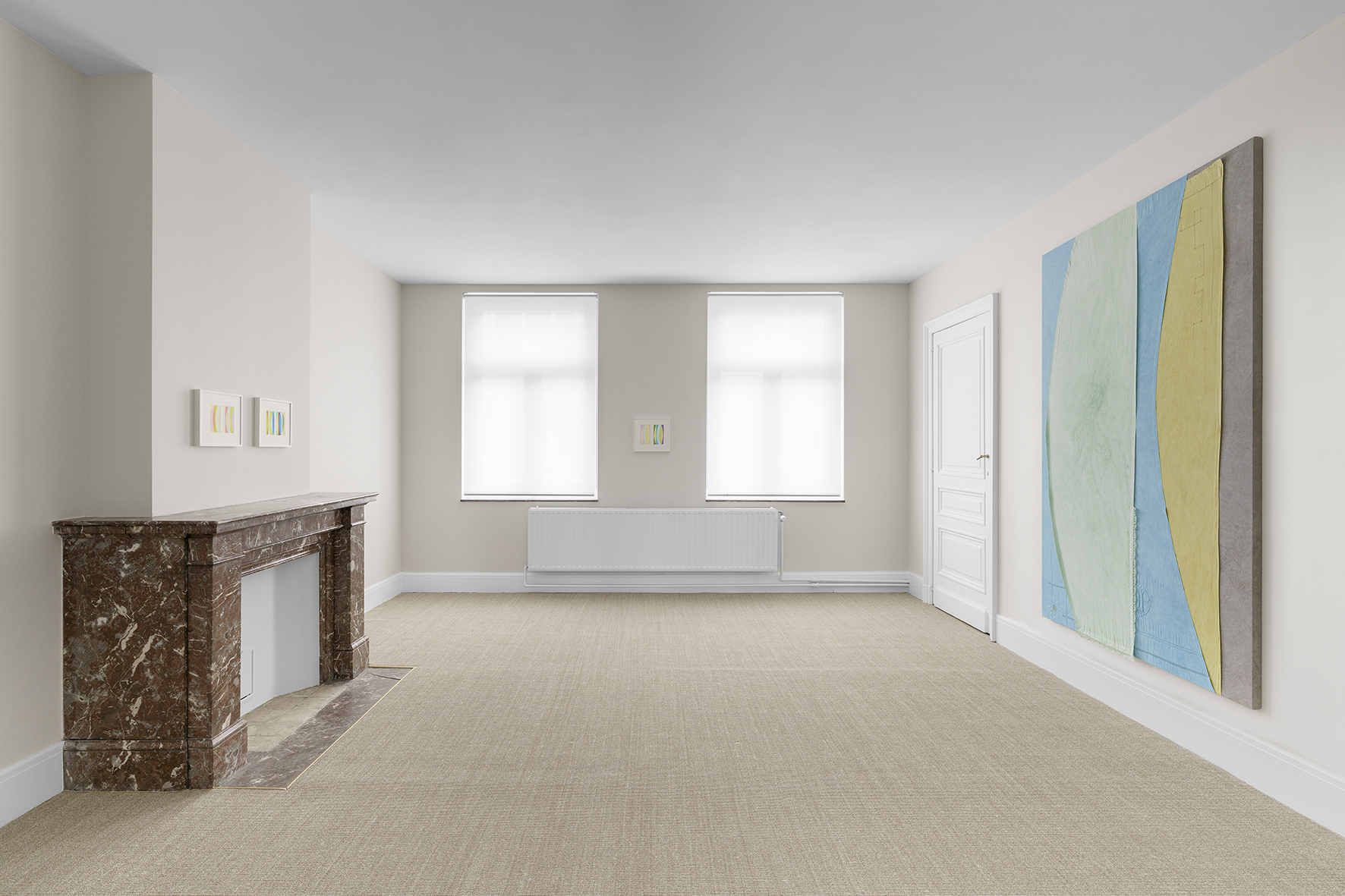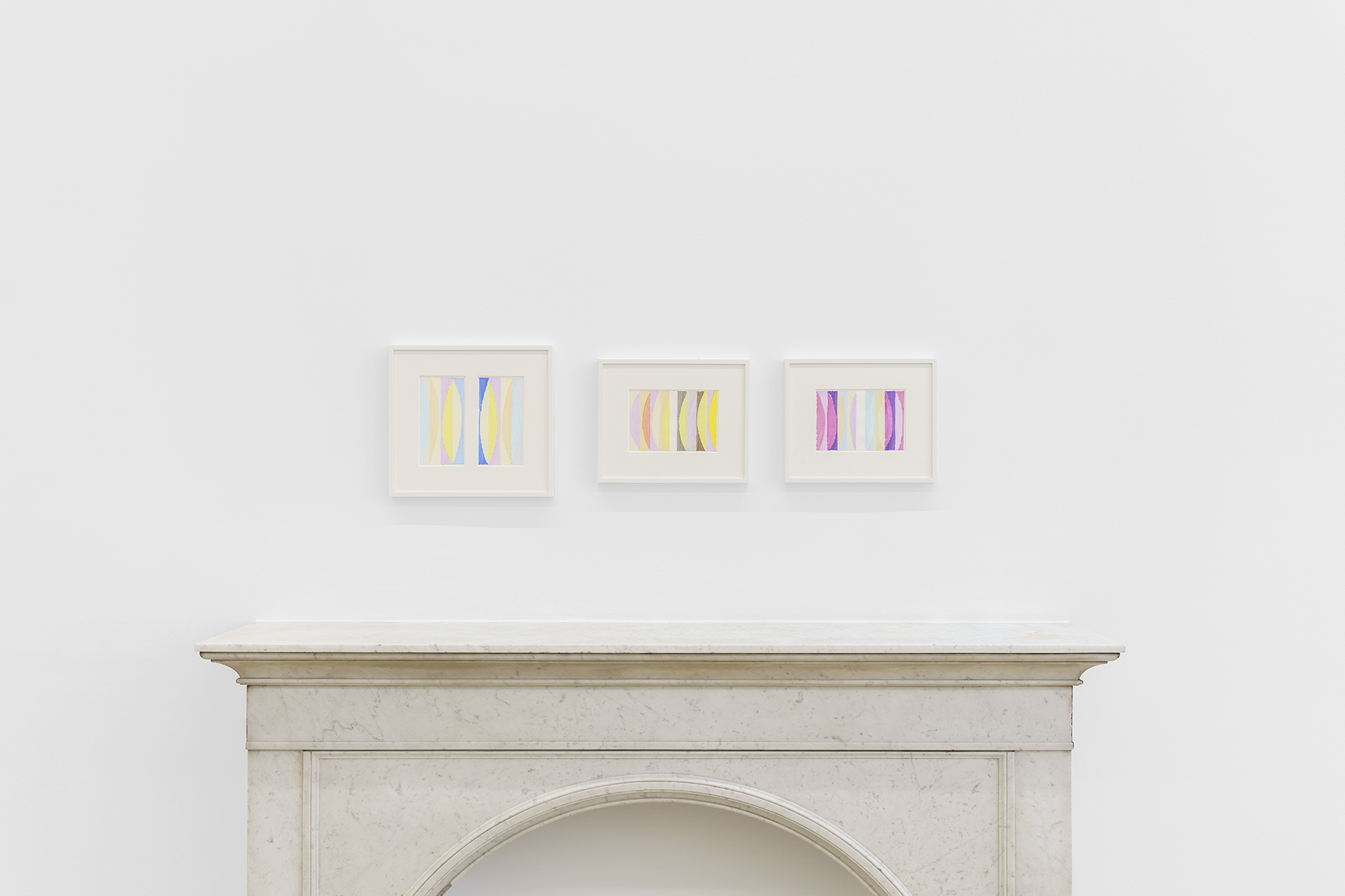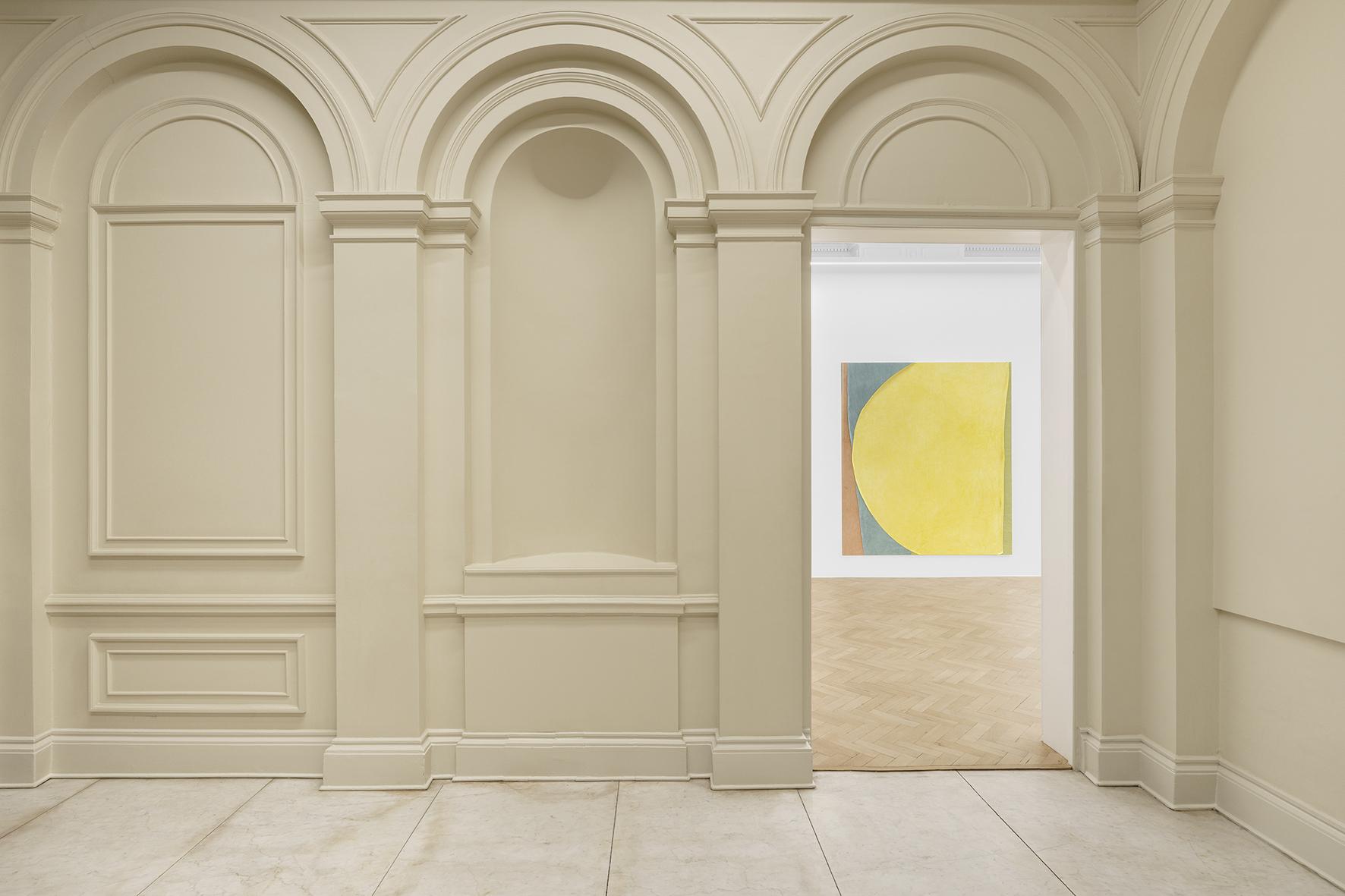
About
Sorry We're Closed proudly present the first personnal exhibition by the French artist Adrien Vescovi.
Adrien Vescovi is known for addressing themes such as the free canvas and architectural and natural scale with textile work and from a contemporary standpoint. As if it were paintings, Vescovi gathers various temporalities through sewing. He prepares natural dyes according to various alchemical processes, developing colour palettes which are then assembled in his compositions.
Textiles are bathed over and over in the dyes, with the objective of working them down to the fiber. The textiles are dried in the sun and sewn together in compositions. Vescovi’s works with textiles also speaks of memory and reminisce old walls in which paint reveals layers of time and the memory of a place.
Graduated from the École Supérieure d’Art d’Annecy, Vescovi is currently doing a residency at Casa Velázquez in Madrid and in 2024 participated in exhibitions in renowned art institutions in France such as Mo.CO Panacée and Collection Lambert in Avignon, where he inaugurated the new space The Antechamber. He has also participated in exhibitions at the Casino of Luxembourg, where he intervened the historical façade with a monumental textile installation.
Adrien Vescovi
D O M I
"When one is halfway between day and night."
Adrien Vescovi's works are paintings of our time. Filled with stories, emotions, and anecdotes, their apparent amiability actually conceals a tremendous amount of work—physical, time-consuming, and, in many respects, collective. Adrien Vescovi's paintings are objects of our time, conceived as assemblages of fragments of absences and fragments of presences. Since 2012, the artist has been creating works using dyed fabrics, following recipes that evolve with his discoveries. As his research progresses, the fabric is suspended, knotted, stretched, laid on the floor, folded, or encased.
These variations and evolutions allow him to explore the plastic qualities of this material, which is not just a simple fabric but cotton canvas. The use of this textile, linked to the ancestral history of women’s work and care given to bodies, is a crucial element that the artist uses with caution. For several years, he has been buying sheets or tablecloths from the past century from a woman named Michèle, some of which still bear the presence of embroidery and monograms that the artist arranges and reveals in his compositions.
This collaborative work also extends to his collection of pigments, which he gathers thanks to the expertise of Christophe, based in the Luberon, France. With these colors, the artist builds his palette, identifiable by its ochre tones, which has recently been enriched by a set of new nuances and variations: a blue after rain, a fresh butter yellow, a gray sky after the storm, or a marshy green. These shades, which color his fabrics, are obtained by Adrien Vescovi through a meticulous dyeing process, using water that has already been colored by previous tints. The artist takes great pride in producing works in a virtuous manner by reusing as much material as possible. The number of works presented for the exhibition, for example, is conditioned by the number of frames available in the artist’s personal stock at the time of production. The collective work continues in the studio, located in the heart of Marseille, where Madeleine, Lilou, and Joséphine assist with the various stages of the process. During these moments, the works absorb all the craftsmanship and gestures of the forces involved. But these moments spent and exchanged with chosen people are actually the result of the solitary work of the artist. For this new series of paintings, Adrien Vescovi notably worked while absent from his Marseille studio, absent from his home, absent from France, in motion, as a resident at the Casa Velasquez in Madrid during the past year. From these moments of “absence,” Adrien adapted and decided to return to drawing. He spent hours drawing in a sketchbook with markers, creating a succession of his signature shape, his motif/mantra : a sort of crescent moon, like a double arch... Reproducing this shape is a way for him to explore the color combinations he likes. Thus, Adrien will explore dozens and dozens of combinations before returning to the studio and following the most instinctive stage: the overall composition of his canvases. Because when Adrien draws, it’s to better know his colors and bring them together once the fabrics are dyed and ready to be cut. There are no preconceived plans for cutting and assembling the shapes. The artist, working on the floor, moves, covers, and places the fabric fragments, remaining receptive to what these pieces create when assembled. Once the balance is found, Adrien consolidates his images and patiently sews the pieces together. He unravels, stitches, re-stitches, or canvasses them before leaving the work free or stretching it on a frame.
When observing Adrien’s paintings, where each cut form calls for its counterpart, I am reminded of Simon Hantaï (1922–2008), whose folds create fragments of absences and presences, negative imprints and positive voids. The Hungarian painter explains that the appearance of folds in his work is directly linked to his desire to recreate the appearance of his mother's apron, which he received from Hungary after her death in 1963, and which he washed, folded, and dried before rolling it onto a wooden rod. Hantaï painted to preserve, to summon, to make visible the memory of his mother. The title of this exhibition, D O M I, resonates like a melody, a clever sequence of two musical notes. Domi is also the nickname for Adrien’s mother, who suddenly passed away earlier this year. So, this too could be painting : an attempt to recall the things of life, to let the tune echo? To resonate the refrain, to forget the world’s grime. A few notes of music to whistle along the way, for both present and absent lives, presences-absences.
Margaux Bonopera
Independent Curator, Head of Exhibitions at the Van Gogh Foundation in Arles
